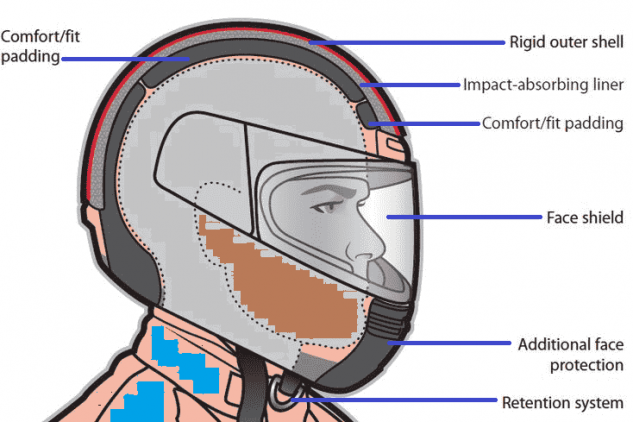1035
AI reddit search results
(lemmy.today)
For preserving the least toxic and most culturally relevant Tumblr heritage posts.
Here are some OCR tools to assist you in transcribing posts:
FOSS Android Recs per u/m_f@discuss.online: 1 , 2
Don't be mean. I promise to do my best to judge that fairly.
Honest question: why every 4-5 years?
I’ve always considered helmets good until you knock ‘em once. Then you have to replace ‘em because they lose their structural integrity crumpling to protect your noggin.
Am I misinformed or is it a matter of “you’ll probably knock it in that timeframe, even if you don’t realize it?”
The problem is it really depends who you ask. On road.cc, a fairly reputable bike magazine/website, you can find this: link
When you actually look on helmets.org I am not sure what part of the manufacturer’s stance they imply that this program backs. link
Personally, I like to replace it every 4 years because I use mine a lot and I would rather fall for a selling trick than risk a higher chance of brain injury. In any case, a system like MIPS or wavecel would, in my opinion, justify buying a new helmet anyway if you don’t have that on your old one.
I do this with motorcycle helmets. Yeah, if they're stored in ideal conditions they might last forever. But I ain't trusting my last two brain cells to that.
At a guess, it could be because the materials just naturally degrade over time. Any foam will start disintegrating, sun exposure could weaken the plastic, and the straps will fray.
I ride a motorcycle as my commuting vehicle and I find my helmet needs replacing every 5 years max, as the inner foam lining has compressed to point where it is no longer snug to my face and therefore unsafe.
Push bike helmets would be made of similar materials, just with less coverage.
So as @wander1236@sh.itjust.works says, it would be materials degradation.
Isn't the foam lining replaceable?
A helmet is like an Ogre (or an onion, but never parfait).
I did a quick search for a diagram to illustrate this, and this one will do:
On the outside, there will be a hard layer, normally made out of Fibreglass, Polycarbonate or Carbon Fiber depending on your budget and tolerance for weight. Beyond simply protecting the next layer, it's primary purpose is to spread any impact trauma across the next layer.
Under that will be a thick layer of expanded polystyrene foam - this is what saves your head in the event of unplanned rapid deceleration.
Under than will be some comfort padding, normally attached to removable liners, which helps to keep the helmet comfortably in place on your head. This is the layer can be removed for washing/replacement.
The one we are really worried about degrading is the polystyrene one, which isn't readily replaceable.
The outer shell is normally sculpted somewhat to assist with aerodynamics, which decrease wind buffeting and noise for the rider.
There's also vents and air channels, visor ratcheting mechanisms and on some helmets provisions for bluetooth communications systems, but that's a whole other story.
Your helmet is arguably the most important piece of kit you have, and the groupthink is to pay as much as you can afford about every 5 years (whether you ride every day or bi-annually).